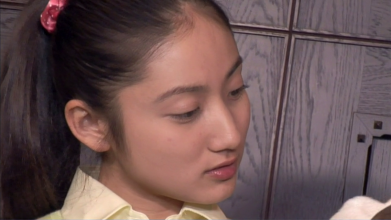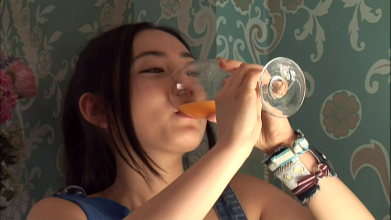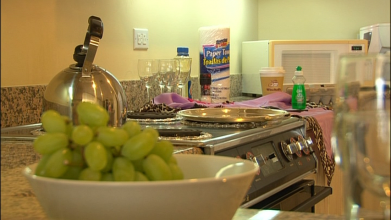Anime is very different from real footage so it makes sense they would change more options, but it's kind of pointless to not use a preset since it'll set quite a few of those options to the same thing which means your command isn't as long. I change about 8 options(excluding quality and color stuff) instead of having to specify every single one of them.@SamKook I don't know about x265, but anime nerds encode in a special way without presets:
--limit-refs 2 --ctu 32 --max-tu-size 16 --hist-scenecut --no-cutree --no-strong-intra-smoothing --open-gop --cbqpoffs -2 --crqpoffs -2 --lookahead-slices 1 --no-early-skip --tskip --rskip 0 --keyint 240 --ref 4 --bframes 8 --b-pyramid --b-adapt 2 --no-sao --no-sao-non-deblock --aq-mode 3 --aq-strength 1 --deblock 1:-1 --tu-intra-depth 2 --refine-intra 4 --dynamic-refine --tu-inter-depth 2 --me 3 --wpp --subme 7 --crf 15 --b-pyramid --weightb --rd 5 --rdoq-level 2 --psy-rdoq 3 --qcomp 0.72 --refine-mv 3 --analyze-src-pics --max-merge 5--hist-scenecut --no-cutree --no-strong-intra-smoothing --open-gop --cbqpoffs -2 --crqpoffs -2 --lookahead-slices 1 --no-early-skip --tskip --rskip 0 --keyint 240 --ref 4 --bframes 8 --b-pyramid --b-adapt 2 --no-sao --no-sao-non-deblock --aq-mode 3 --aq-strength 1 --deblock 1:-1 --tu-intra-depth 2 --refine-intra 4 --dynamic-refine --tu-inter-depth 2 --me 3 --wpp --subme 7 --crf 15 --b-pyramid --weightp --weightb --rd 5 --rdoq-level 2 --psy-rdoq 3 --refine-mv 3 --analyze-src-pics --max-merge 5--no-strong-intra-smoothing --open-gop --cbqpoffs -2 --crqpoffs -2 --no-early-skip --rskip 0 --keyint 240 --ref 4 --bframes 8 --b-pyramid --b-adapt 2 --no-sao --no-sao-non-deblock --aq-mode 3 --aq-strength 1 --qcomp 0.72 --deblock 1:-1 --tu-intra-depth 2 --refine-intra 4 --dynamic-refine --tu-inter-depth 2 --me 3 --wpp --subme 7 --crf 16 --b-pyramid --weightb --rd 5 --rdoq-level 2 --psy-rdoq 4 --refine-mv 3 --analyze-src-pics --max-merge 5--ctu 32 --rc-lookahead 80 --max-tu-size 16 --no-cutree --open-gop --no-strong-intra-smoothing --cbqpoffs -2 --crqpoffs -2 --lookahead-slices 1 --no-early-skip --tskip --rskip 0 --keyint 240 --ref 4 --bframes 9 --b-pyramid --b-adapt 2 --no-sao --no-sao-non-deblock --aq-mode 4 --aq-strength 1 --deblock 1:-1 --tu-intra-depth 1 --refine-intra 4 --dynamic-refine --tu-inter-depth 1 --me 3 --wpp --subme 7 --crf 14.8 --b-pyramid --weightb --rd 5 --rdoq-level 2 --psy-rdoq 3 --refine-mv 3 --analyze-src-pics --qcomp 0.76 --max-merge 5
There's more than one option that repeats for all 4 of those option sets and there's likely a preset that includes those options so makes comparing them easier if you just keep the stuff that changes.
It's true you'd likely get better results with a cleaner source, but most people that post x265 stuff compress their stuff way too much so I haven't seen many examples of it looking good at any resolution and I prefer a noisier picture vs a softer one unlike you so it's hard for x265 to impress me.x265 has better handling of motion in bigger areas, which is cpu-intense. the benefit depends on the video having such elements. else it might end up with similar file size.
this time it looks as if we had cranked up the denoiser a bit, which is probably normal behavior for x265 at higher compression.
(my x264 examples, mostly salvage projects, have the denoiser set between 15-19, targeting file size as well.)
eventually, mpeg2 is completely incompatible in its artifacts, and recompression with mpeg4 that must not lose any detail, will end up with similar file size, given big size comes from motion and small detail like grass in the garden. a long but calm video may compress better.
I do want to mess around with it more, especially now that I have a much better cpu, but I also need to figure out how to make that cpu work more since with x264 I get about 40% cpu usage and about 30% with x265 if I don't have any processing to do. I haven't looked into it much yet but I think the default is 12 threads and I've got 32 but x265 seemed to indicate it was using 32 for something so not sure about that.















